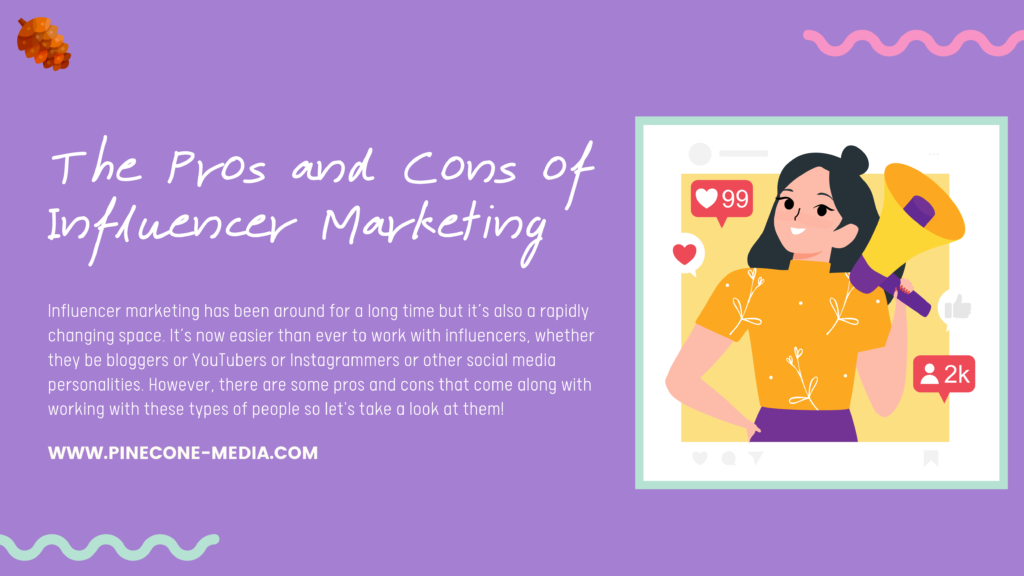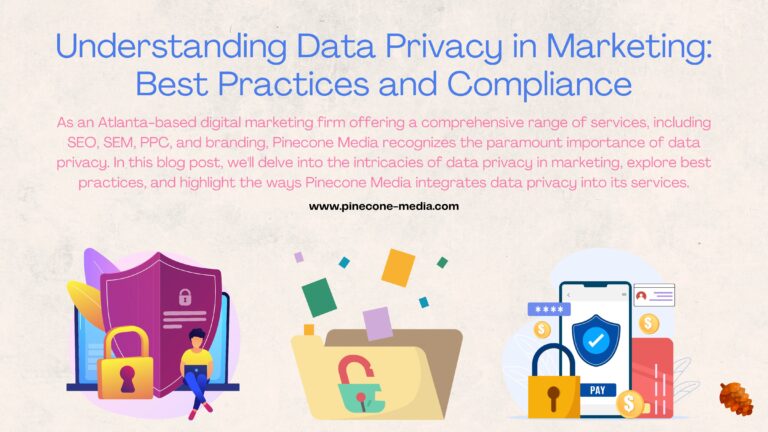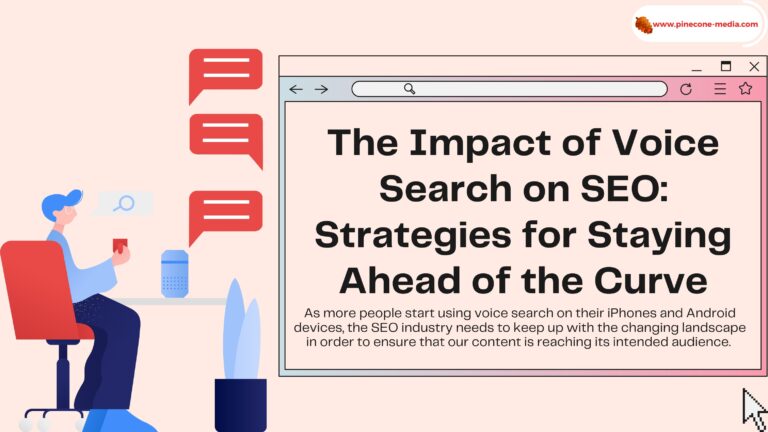Influencer marketing has been around for a long time but it’s also a rapidly changing space. It’s now easier than ever to work with influencers, whether they be bloggers or YouTubers or Instagrammers or other social media personalities. Influencer marketing is being used by brands of all sizes and shapes, from small businesses to multi-million dollar corporations. However, there are some pros and cons that come along with working with influencers, so let’s take a look at them!

The Pros of Influencer Marketing
- It’s easy to set up. You don’t have to be an expert in influencer marketing to get started. In fact, you can do it without any experience at all! All you have to do is pick the right influencers, work with them on your campaign and launch it. You can use tools like BuzzSumo and Hootsuite to find influencers, then use MailChimp or another email marketing service to schedule your outreach.
- It’s inexpensive compared with other marketing channels such as TV ads or print ads because you only pay for what works – not every single impression or click like other channels where you have no idea if someone saw your ad or not (and then pay more money). With influencer marketing there’s no guessing game involved because these social media stars already have large followings so their followers know who they are and what kind of content they share online already – meaning less waste when spending money on advertising campaigns through this channel versus other types like Facebook Ads which cost hundreds per thousand impressions (CPM) but still aren’t guaranteed views either way which means losing money even though advertisers are paying extra for higher rates than normal CPMs rather than lower ones like traditional advertising channels offer such as television commercials where viewers may skip commercials altogether by changing channels during commercial breaks instead of sticking around long enough
- Influencers are trusted by their followers. They have built up their credibility and trust over time, so your audience will be more likely to listen to what they say than if it were coming from a brand. They can also create content for you in the form of blog posts or videos, which helps increase engagement with your brand or product on social media platforms where influencers have large followings (like Instagram). In addition, influencers often have SEO skills that can help boost the organic search ranking of certain keywords related to products/services featured by them on their channels – this helps bring more traffic back into your website which leads directly into conversions (for example: making purchases).
- Influencers can help you reach your audience. If you are a brand, influencers can help you expand your reach and connect with new audiences in new markets.
- The main benefit of influencer marketing is that you can reach more people. You’re not just targeting your existing audience, but also reaching new audiences who are more likely to buy your product.
- You can target influencers with specific demographics, interests and/or followers as well as their follower demographics. For example: if you’re selling sports equipment then it makes sense to work with an influencer who has a large following of sports enthusiasts; if you’re selling sushi then it makes sense to work with an influencer who has a large following of foodies; if the goal is simply driving traffic back to your website then any type of person will do!
- The first thing that you’ll likely notice about influencer marketing is how quickly you can see results. You can have an ad up and running in just a few hours, and if your influencer has a large following, it won’t be long before people start clicking on the link in your ads. This will give you some idea of how well your campaign is doing–and whether or not it’s worth continuing as planned. It’s also possible to see quick results when working with influencers: according to some estimates, 90% of businesses that use this method report seeing positive ROI within one month!
- Influencer marketing is inexpensive. The cost of influencer marketing is based on the time it takes to find, negotiate and work with them. This can be free by leveraging your own network or done through an agency that specializes in this area like TapInfluence. The price varies depending on the quality of influencers you want to work with–the more popular they are, the higher their fee will be–but even still, it’s a fraction of what it would be to advertise on TV or in print media (or even online).
- Influencer marketing is a great way to grow sales. In fact, it’s one of the most effective ways of reaching new audiences and expanding your customer base. There are many ways to measure the success of influencer marketing campaigns–in fact, there are so many that it can be hard to know where to start!
The Cons of Influencer Marketing
- While influencer marketing is still a relatively new industry, it’s not always clear to consumers that influencers are paid. This can lead some consumers to feel deceived or even deceived by their favorite influencers. The result? A negative perception of the entire marketing method as a whole. Some influencers have also gained a bad reputation over time due to unethical behavior or lack of transparency in their work (for example, using fake followers).
- One of the drawbacks of influencer marketing is the lack of transparency. Since influencers are paid for their posts, there’s always a risk that they’ll post something biased or exaggerated. On top of that, if you want to work with an influencer but can’t find him/her, then it’s going to be difficult for you as well! And sometimes even if the person is easy for you to reach and work with, there might be some issues in terms of scheduling and communication between yourself and him/her which could lead up making things difficult later down the line when deadlines have been missed due to miscommunication.
- Why it is hard to find influencers? How to find influencers? How to reach out to influencers? In order for your campaign to be successful, you need a good number of influencers that have a large following and are relevant in your industry. Influencer marketing has become more competitive over the years because there are more brands using this channel than ever before.
- The biggest challenge with influencer marketing is measuring ROI. Unlike with traditional advertising, where you can easily track how many people saw your ad and how many of them responded to it (by clicking on it, for example), there’s no way to measure the effectiveness of influencer posts. In order to get around this problem, some brands have started using social media analytics tools like Sprout Social or Hootsuite so they can see which posts are performing well in terms of engagement–but these tools still don’t provide an exact dollar amount for each engagement. In other words: You’ll know if someone liked your post or commented on it, but not whether they bought anything as a result.
- Because influencer marketing is a third-party service, it takes more time to plan and execute. The lead time is longer because you are working with a third party, and the process time is also longer because of this. The reason for this is that there are many moving parts when it comes to influencer marketing. Influencers have their own networks of followers who they need to reach out to in order to get them interested in your product or service. You’ll also need someone on your team who can manage all these relationships effectively–the person who manages your influencers must have excellent communication skills since they will be dealing with multiple people at once!
It’s important to remember that the pros and cons of influencer marketing are largely contingent upon who you work with and how you approach it. If you’re working with a reputable influencer, then there are likely more pros than cons. However, if your influencer is not trustworthy or has poor quality content–or worse yet, they don’t disclose their affiliation at all–then this type of marketing can be detrimental to your brand image and reputation.
In order for influencer marketing to succeed in any capacity, it needs to be done right: identifying relevant audiences; building trust and credibility; measuring results (and making sure those results aren’t just vanity metrics); keeping an eye on branding control… The list goes on! But if done properly, it’ll help increase brand awareness while growing revenue at the same time.




